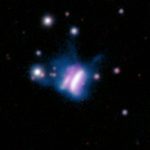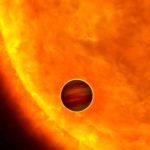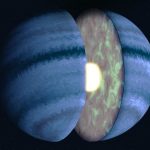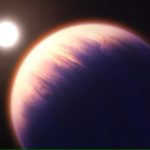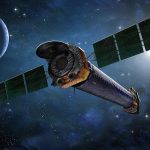This is the largest planet-forming disk ever seen
Roughly 1,000 light-years from Earth, there is a cosmic structure known as IRAS 23077+6707 (IRAS 23077) that resembles a giant butterfly.
Ciprian T. Berghea, an...
Maybe ultra-hot Jupiters aren’t so doomed after all
Ultra-hot Jupiters (UHJs) are some of the most fascinating astronomical objects in the cosmos, classified as having orbital periods of less than approximately 3...
Scientists discover a giant cosmic butterfly: The largest planet-forming disk ever seen
Astronomers have made an exciting discovery: a gigantic, cosmic butterfly in the night sky that turns out to be the largest planet-forming disk ever...
After swirling around a black hole, matter just falls straight in
The physics surrounding black holes is just plain weird. A gravitational well so strong that not even light can escape can do some pretty...
How extreme conditions on Mars could support life
Many people might think that the search for life on Mars ended when NASA's first rovers sent back images of the planet's barren, harsh...
Webb Telescope reveals surprising secrets of distant exoplanet
The James Webb Space Telescope has provided scientists with an unprecedented look into the interior of a distant exoplanet, revealing surprising details about its...
Astronomers discover the second lightest “cotton candy” exoplanet to date
The hunt for extrasolar planets has revealed some truly interesting candidates, not the least of which are planets known as “Hot Jupiters.”
This refers to...
Scientists discover exhaust vent of Milky Way’s supermassive black hole
At the center of our galaxy, the Milky Way, lies a supermassive black hole named Sagittarius A*.
This black hole, located about 26,000 light-years away...
When Uranus and Neptune migrated, three icy objects were crashing into them every hour
The giant outer planets haven’t always been in their current position. Uranus and Neptune for example are thought to have wandered through the outer...
Scientists use AI to uncover rare cosmic signals
An international team led by Prof. Ge Jian from the Shanghai Astronomical Observatory has used artificial intelligence (AI) to detect rare signals in the...

